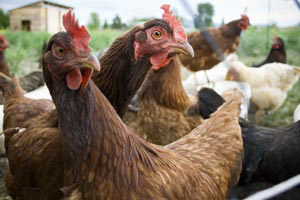Starfish and mussels possible protein source for hens

A new research project by Aarhus University and the Danish Shellfish Centre is investigating the possibility of using starfish and mussels as alternative sources of protein for laying hens and young pigs.
The project will examine whether mussels and starfish can be used as an alternative source of protein – in terms of quality – to soy and fish waste and whether it is economically viable to trawl them up from the sea.
Mussels have the ability to remove nutrients from the fjords and can therefore make an important contribution to reducing the impact of pollution on the fjords from, for example, pig farms
“We work from the concept of so-called compensatory farming, where the nutrients leached into the fjords from households, industry and agriculture can be returned onto land in the form of, for example, pig feed using proteins from mussels and starfish,” says Jan Værum Nørgaard, project member and associate professor the Department of Animal Science at Aarhus University.
Work is also ongoing to ensure that compensatory mussel farming may allow farmers to buy mussel farms where the nutrients they remove from the fjords can then be offset in their farm nutrient balance sheet.
Suitable for organic production?
Originally, the idea was to examine only mussels as a protein source, but the booming number of starfish at the bottom of the fjord has in the past years turned into a pest, because the starfish are predating the mussels.
“Starfish are being sent to Poland for processing and sold as fish feed in Poland, which is not a particularly lucrative business for the fishermen. We are therefore also looking at whether starfish can be used as a protein source,” explains Jan Værum Nørgaard.
“If our results show that mussels and starfish are good sources of protein, this could be particularly interesting for organic egg producers because they lack good protein sources, says Jan.
The first results from the project are expected before the end of the year.
Source: Aarhus University












